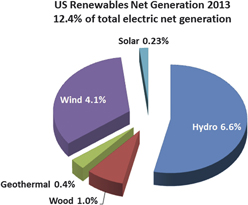Published online by Cambridge University Press: 03 June 2015

New research results in several areas that can help to facilitate the large-scale integration of variable renewable power sources into the electric power system are reviewed.
Increasing the market share of variable renewable electric power generation in the United States from the present 4% is eminently feasible, and can be facilitated by recent research. The amplitude of variability of wind and solar power is much less at high frequencies than at low frequencies, so that slow-ramping generators such as combined-cycle natural gas and coal can compensate for most of the variability. The interannual variability of wind power is beginning to be understood, as are the biases in its day-ahead forecasts. Geographic aggregation of wind and solar power has been proposed as a method to smooth their variability; for wind power, it has been shown that there is little smoothing at timescales where the magnitude of variability is strongest. It has also been shown that the point of diminishing returns is reached after a relatively few wind plants have been interconnected. While good prospects for lower cost electric storage for grid applications exist, the profitability of storage for integration of renewable power is likely to remain a difficult issue. New extremely efficient, low pollution, and fast-ramping natural gas plants have come on the market. It is now possible to predict the amount of additional capacity of this sort that must be procured by system operators to cover the uncertainty in wind forecasts.